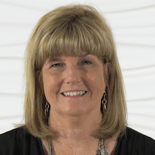When a Senior’s Residence Transition Is Needed: The Practitioner’s Role
Presented by Patrice Antony
12-Month Subscription
Unlimited access to:
- Thousands of CE Courses
- Patient Education
- Home Exercise Program
- And more
Change is hard for everybody, but especially for the older adult. When is the right time for a senior to make a living arrangement change, and how can practitioners help? This course will educate practitioners on how to use their unique skills to identify seniors who are at risk in their current environment and how to lead them to a safer place. This course will emphasize how to identify patient needs, decision-makers, and the need for advance directives and discuss effective goal writing and resource tools to promote efficiency.
Meet your instructor

Patrice Antony
Patrice Antony, PT, CAPS, is a Florida International University graduate who has been practicing physical therapy in the central Florida area since 1981. Patrice became a Geriatric Clinical Specialist in 1992 and received the Clinical Excellence in Geriatric Practice award from the Geriatric Section of the APTA in 1996; she…
Chapters & learning objectives

1. When It Is Time to Move
In this chapter, issues that impact a senior’s ability to stay in their home will be covered, along with indicators for when a move or change to the next level of care is needed and the emotional impact of leaving home.

2. Making the Transition
This chapter will cover who makes decisions for a client with issues and highlight potential resources to assist with making lifestyle changes or needed actions to ensure safety.

3. Managing an Involuntary Move
When an involuntary move is needed, what should a practitioner do to support? This chapter will cover when an involuntary placement has to happen, the legal issues surrounding it, and techniques to lessen the trauma to the client through a coordinated team effort and through various state and local resources.

4. Documentation Best Practices
In this chapter, areas of OASIS will be identified to document environmental safety issues, cognitive function, and community resource needs. Practitioners will also learn effective goal writing for home safety and durable medical equipment needs, as well as how to document essential details of clinical decision-maker contacts and advance directives for optimal communications and patient outcomes.